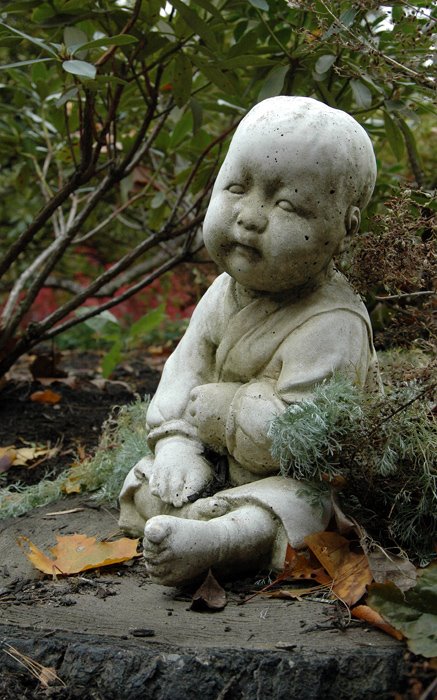 So, in my last post, I tried to broadly define vipassana, and ended up with something like this: (1) calmly observe phenomena that arise in consciousness, and (2) while you're doing that, keep an eye out for the suffering, impermanence, and insubstantiality in what you are seeing. And naturally, your mind will become free from craving, and thus full of peace. Easy as pie. (kidding!)
So, in my last post, I tried to broadly define vipassana, and ended up with something like this: (1) calmly observe phenomena that arise in consciousness, and (2) while you're doing that, keep an eye out for the suffering, impermanence, and insubstantiality in what you are seeing. And naturally, your mind will become free from craving, and thus full of peace. Easy as pie. (kidding!)From what I have seen, vipassana traditions tend to differ just in terms of how they accomplish those two defining features. For example, one teacher might ask students to investigate consciousness in an orderly and systematic fashion. Another might suggest that students examine whatever naturally arises. One teacher might place particular emphasis on impermanence, while another focuses on the suffering that inevitably occurs when the body is asked to be still. Some teachers like to deconstruct students' sense of "I" by calling attention to the illusory nature of the "self," but then another teacher will ask you to focus on the subtle and ephemeral interplay between mind and body.
You get the idea. Yet, this amazing diversity is easy to forget when you practice a particular form of vipassana as taught by a particular teacher. For example, when I had just completed my first "Vipassana Course" (in the tradition of U Ba Khin, as taught by S.N. Goenka), I had an incredibly narrow conception, which I suspect is pretty natural for many students fresh out of a course. We re-enter the world, telling ourselves, "Oh, vipassana is the equanimous observation of bodily sensations!" Which, of course, is both true and false. We are like children who have just had our first taste of vanilla ice-cream, and thus assume that ALL ice-cream must come in that same sweet flavor. But oh no, there are many vipassana flavors.... 31 at least.
I don't plan to do much cross-tradition analysis, and most of my posts will likely be grounded in my experiences and observations within the distinctive form of vipassana taught at Goenka centers around the world. After all, this is what I practice. However, my understanding is undoubtedly informed by other teachers and texts that I enjoy, and I think it is fun to see how vast the world of Theravadan Buddhism is. If I could recommend one awesome book in this regard--which seriously opened my eyes to the dazzling variety of practices that all fall under the umbrella of "vipassana"-- it would be Jack Kornfield's Living Dharma. And for those who prefer to listen, there is a nice series of talks (downloadable for free here) by James Baraz in which he essentially leads students through Kornfield's book. There are ten talks total, each one beginning with the title, "Buddhist Master Series."
...(Click Here to Read More)

